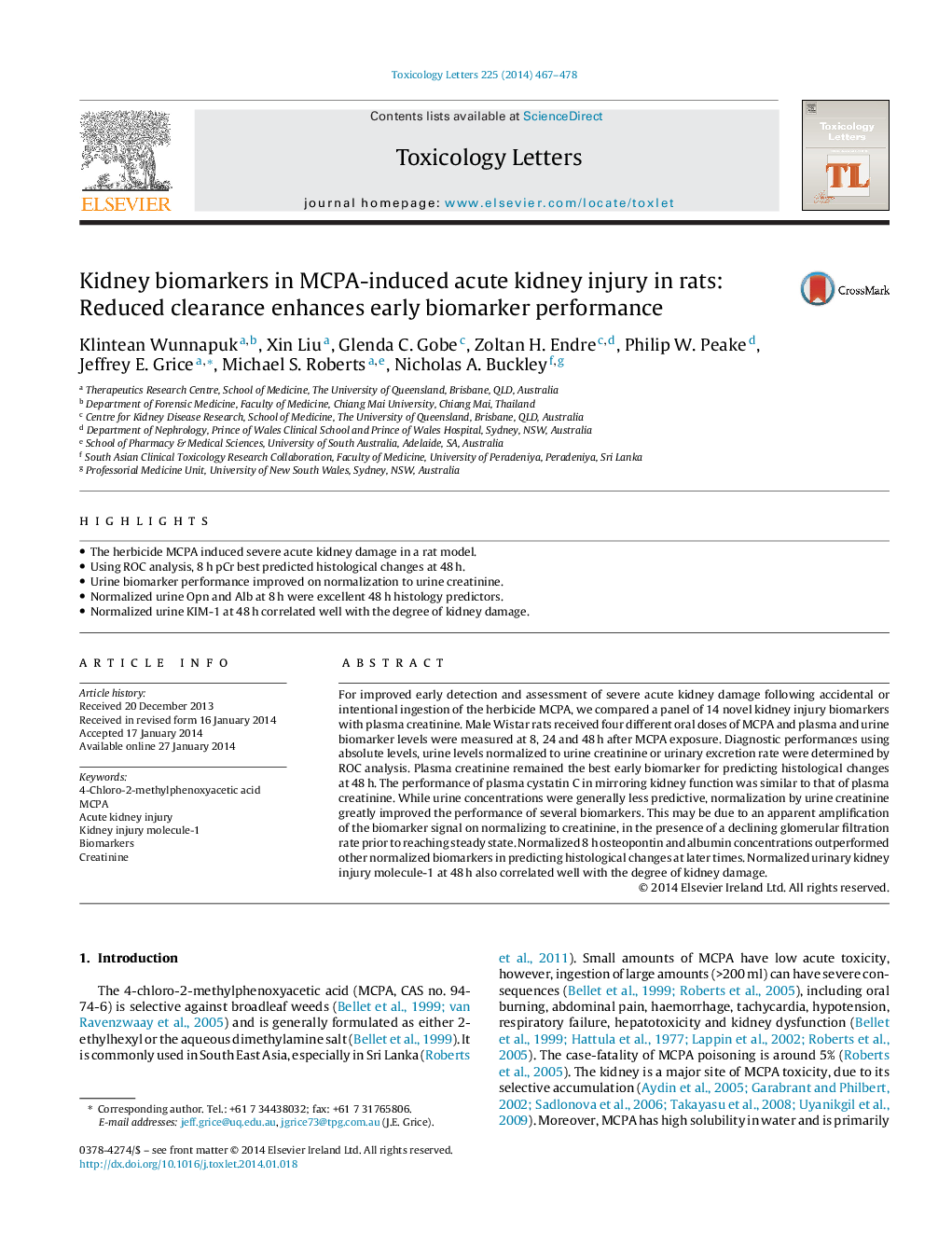| کد مقاله | کد نشریه | سال انتشار | مقاله انگلیسی | نسخه تمام متن |
|---|---|---|---|---|
| 5860389 | 1133182 | 2014 | 12 صفحه PDF | دانلود رایگان |

- The herbicide MCPA induced severe acute kidney damage in a rat model.
- Using ROC analysis, 8Â h pCr best predicted histological changes at 48Â h.
- Urine biomarker performance improved on normalization to urine creatinine.
- Normalized urine Opn and Alb at 8Â h were excellent 48Â h histology predictors.
- Normalized urine KIM-1 at 48Â h correlated well with the degree of kidney damage.
For improved early detection and assessment of severe acute kidney damage following accidental or intentional ingestion of the herbicide MCPA, we compared a panel of 14 novel kidney injury biomarkers with plasma creatinine. Male Wistar rats received four different oral doses of MCPA and plasma and urine biomarker levels were measured at 8, 24 and 48Â h after MCPA exposure. Diagnostic performances using absolute levels, urine levels normalized to urine creatinine or urinary excretion rate were determined by ROC analysis. Plasma creatinine remained the best early biomarker for predicting histological changes at 48Â h. The performance of plasma cystatin C in mirroring kidney function was similar to that of plasma creatinine. While urine concentrations were generally less predictive, normalization by urine creatinine greatly improved the performance of several biomarkers. This may be due to an apparent amplification of the biomarker signal on normalizing to creatinine, in the presence of a declining glomerular filtration rate prior to reaching steady state. Normalized 8Â h osteopontin and albumin concentrations outperformed other normalized biomarkers in predicting histological changes at later times. Normalized urinary kidney injury molecule-1 at 48Â h also correlated well with the degree of kidney damage.
Journal: Toxicology Letters - Volume 225, Issue 3, 21 March 2014, Pages 467-478